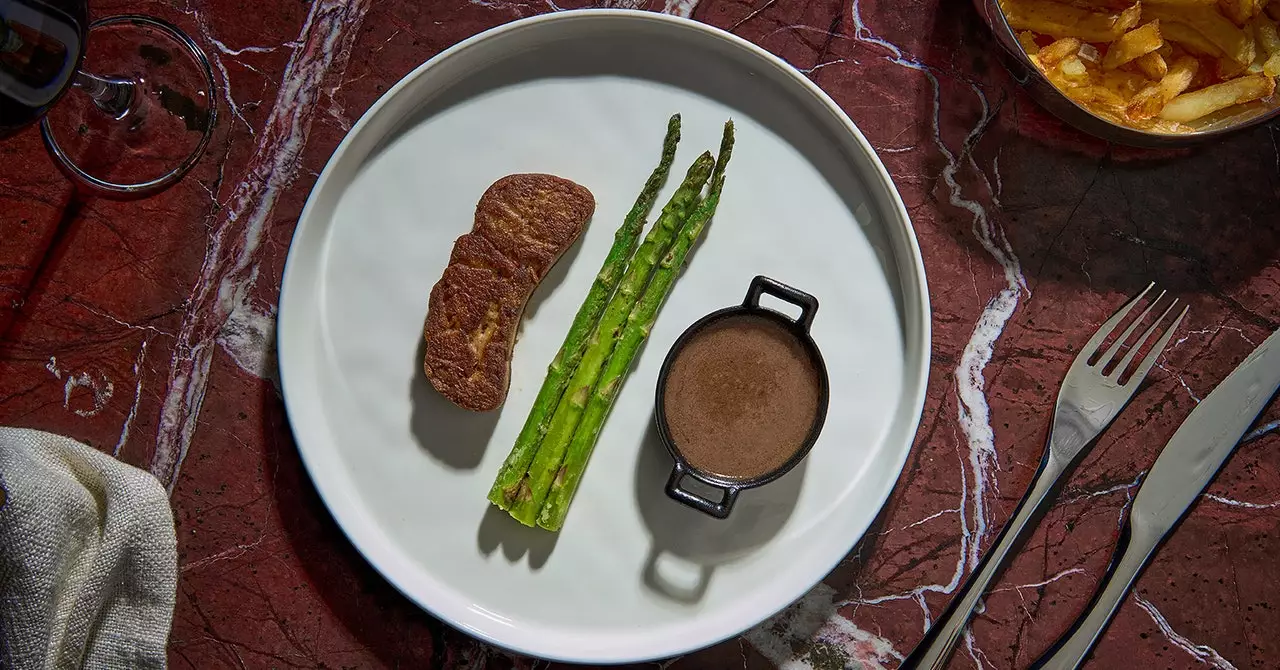Cultivated meat is navigating a fascinating and complex landscape. As the culinary world evolves, particularly in urban settings like New York, innovative food companies are seeking intriguing ways to present their messages. A recent event at an upscale sushi bar highlighted this dynamic, showcasing not only gourmet aesthetic but also a bold mission regarding the future of meat consumption. The spotlight was on Vow, an Australian cultivated meat firm, which uses quail cell-derived foie gras in bioreactors. This celebration of haute cuisine albeit with a lab-grown twist is compelling for several reasons, drawing attention to the changing face of meat production.
At its core, the event catered by renowned sushi chef Masa Takayama presented dishes that bordered on art, all while incorporating cultivated meat – a product aimed at high-end consumers. The choice of foie gras as a star ingredient is telling; it signifies a strategic choice by Vow to position its offerings as luxury items. Traditionally, the cultivated meat industry is built on altruistic ideals of sustainability and animal welfare. Vow’s approach, however, is a notable departure from this norm. CEO George Peppou has adopted a bold strategy of framing cultivated products as premium, connecting them with decadence and exclusivity. The lavish menu featuring black truffles not only tantalizes the palate but also raises questions about the potential of lab-grown meat in the luxury sector.
Peppou’s provocative statements further fuel this discussion, as he challenges the conventional wisdom surrounding cultivated meat’s future. By claiming that the narrative of failure has been prematurely written, he underscores a confidence in technological advancements despite current challenges. This optimistic outlook is crucial, as it inspires stakeholders within the food ecosystem to remain hopeful while exploring new dimensions of culinary artistry.
Despite the glamorous presentation, the fundamental aspects of producing cultivated meat pose significant challenges. The industry has faced criticism for its high production costs, often still hovering between $10,000 and $68 per pound for lab-grown alternatives. These figures starkly contrast with conventional meat prices, such as chicken at approximately $2.67 per pound. While startups in this space have claimed reductions in costs, there remains a noticeable gap. Vow’s decision to embrace the luxurious branding may be an attempt to bridge this disparity, yet it risks alienating a vast consumer base that may prioritize affordability over gourmet experiences.
In Peppou’s perspective, the historic reliance on cultivated chicken products is misguided. He suggests that the essential elements of cultivated meat are rooted in expensive biomedical practices, often reserved for pharmaceuticals. This financial conundrum presents a dual-edged sword; while Vow seeks to create refined experiences, the larger industry grapples with a model that scarcely aligns with mass-market production.
The broader implications of this luxury positioning are worth considering. By appealing to affluent consumers, cultivated meat brands like Vow could potentially carve out a niche that promotes awareness and acceptance of lab-grown alternatives. In an era where sustainability is paramount, and meat consumption is increasingly scrutinized for its environmental impact, sustainable luxury could represent a revolutionary path forward.
However, unless the costs are significantly lowered, the growth of cultivated meat as a mainstream offering may be limited. Addressing this challenge will require creative solutions that bridge the gap between high-performing bioprocesses and techniques that reduce expenses. As the cultivated meat industry grapples with these complexities, innovation will play a pivotal role.
As events like Vow’s launch demonstrate, the culinary world is evolving to embrace new technologies and narratives around food consumption. The interplay between luxury dining experiences and cultivated meat products could very well set the future tone for not only what we eat but also how we perceive our food sources. Educating consumers about sustainability and innovation will be key in driving acceptance and normalizing lab-grown products.
Cultivated meat’s positioning within the luxury food market may redefine consumer expectations and industries alike. It hints at a future where technology meets tradition, allowing chefs to combine ethical concerns with gourmet aesthetics. As the industry progresses, the potential for cultivated meat could align more harmoniously with consumer values, paving the way for a deliciously sustainable world.

